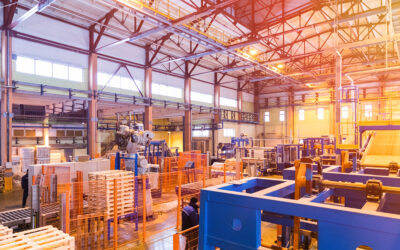IoT is already a reality. Millions of IoT products have been deployed ranging from home temperature control and entertainment to security and industrial control. But this is just the beginning of the new IoT age, with its market projected to grow exponentially over the next few years.
With all the hype around IoT, the complexity of the technology under the covers that makes it all possible is often vastly underestimated. In this Insight Guide, we take a look at the individual building blocks of an IoT solution to understand the resources and expertise needed for a successful implementation.
1. Things
The bottom layer of IoT architecture comprises the device layer. It is key to choose the right hardware and peripherals, along with necessary sensors to meet your business need. Devices can be of various types, but to qualify as an IoT device, it must have some communications functionality built in that directly or indirectly connects to the Internet. Its main job is to collect or disseminate data (or do both).
Some devices need no operating systems such as health and fitness monitoring sensors. That said, devices from watches to industrial machines may run on a 32 or 64 bit computing platforms.
2. Local Services
Local Services can be considered the brain at the “edge” of the IoT system and give intelligence to the data before it’s transmitted. Their main function is to process the data captured by the sensors. Processors mostly work on a real-time basis and can be easily controlled by applications. Processors also perform encryption on processors and decryption of data to maintain security of communication.
3. Connectivity
Connectivity is essential in any networked system. There are a whole host of options, both wired or wireless, depending on the application requirements. For instance, ZigBee and LoRaWAN require very low power though have limited bandwidth; while 3G has good coverage and high bandwidth but is relatively expensive both in terms of hardware and usage. The power/bandwidth ratio comes down to physics but it needs to be addressed when considering the battery life of your device. Several chipsets are now available which enable you to switch between radio technologies. This is useful if long life is important in the field. Where there’s a need for high bandwidth, in a factory for instance, with a large number of connected sensors and actuators scattered over a wide area, wired technology would be the best fit.
4. Gateways
A major barrier to realising the full promise of IoT is that around 85 per cent of existing things were not designed to connect to the Internet and cannot share data with the cloud. Addressing this issue, gateways for mobile, home, and industrial applications act as intermediaries between legacy things and the cloud, providing the much needed connectivity, security, and manageability.
For example, with the help of gateways, machinery on a production line can relay information that alerts service technicians to impending maintenance problems. IoT gateways typically fall into two categories: simple units that communicate raw streams of data or intelligent gateways that perform some initial data analysis so they can transmit only a subset of the full data stream. Intelligent gateways reduce the volume of data flowing across the network to management systems and help organisations identify high-value information.
5. Platform
Ready-built IoT platforms simplify the development of IoT applications. The IoT platform easily connects devices and sensors and enables connections between related information systems and operational assets. These platforms deliver more comprehensive business value than a do-it-yourself platform approach.
As more well established enterprises are entering the IoT market, scalability is critical. Ready-built IoT platforms can scale to meet the needs of any company and easily accommodate continual growth and change.
Platforms are usually deployed in the cloud. However, you should check if there is an on-premise deployment option in case the project is big enough to justify hardware investment or there are particular security requirements, for example with a national infrastructure. In addition to basic functionalities, some platforms, like ThingWorx provide value add features like data mining, multi-tenancy, machine learning and augmented reality.
6. Applications
All IoT projects are carried out for a purpose. Maybe the goal is receiving an alarm when a laboratory room reaches a certain temperature, or optimising the water supply of a town. In other cases IoT projects are used for reducing the power consumption of a building or predicting the maintenance of an industrial power unit. IoT applications are just the software element of the system, which use the data that is received by the devices and the functionality that they provide. Such applications will enable businesses to analyse data in near-real time, make automated decisions and interact with their legacy systems to trigger work.
Most applications heavily rely and exploit cloud computing due to ubiquity of available services. With advanced analytics, users of IoT solutions can interrogate high volumes of data to optimise the systems being monitored, predict trends, and perform simulations.
Depending on the level of customisation, three categories can be defined:
- IoT vertical applications, which provide out-of-the-box functionalities for a specific applications like smart waste management, smart building monitoring, smart water metering. These have the advantage of being available now but more rigid and may not perfectly suit your use-case
- Platforms for building your own application using configurable dashboards, reports, alarm, rules and graphics. These can be independent products, which integrate with external data sources, or they can be provided as a part of an IoT software platform. The best compromise as the majority of hard work has been done allowing you to focus on what’s of value to your customer or business.
- Custom software applications, which are developed from the ground up using standard software development technologies. The slowest and most expensive and potentially least secure route normally preferred by internal teams with a vested interest.
In a nutshell…
End clients looking for a solution to fit their needs, engineering firms designing IoT projects and technology providers in the IoT ecosystem must understand the complexity and symbiotic relationships of these 6 building blocks. Without a comprehensive knowledge then the chances of project failure soar.
Foundational Elements of an IoT Solution
If you want to make the most of the IoT for your business, but don’t quite know where to start, then you’ve come to the right place.
- Details of three common high-level recurring IoT solution patterns: smart connected products, smart connected operations, and new and innovative experiences
- How edge computing will play an important role in how we connect, secure, and interact with things from the cloud
- Key cloud technologies, design goals, and implementation details associated with IoT
- How to get your applications to market or into the hands of your business quickly and effectively



